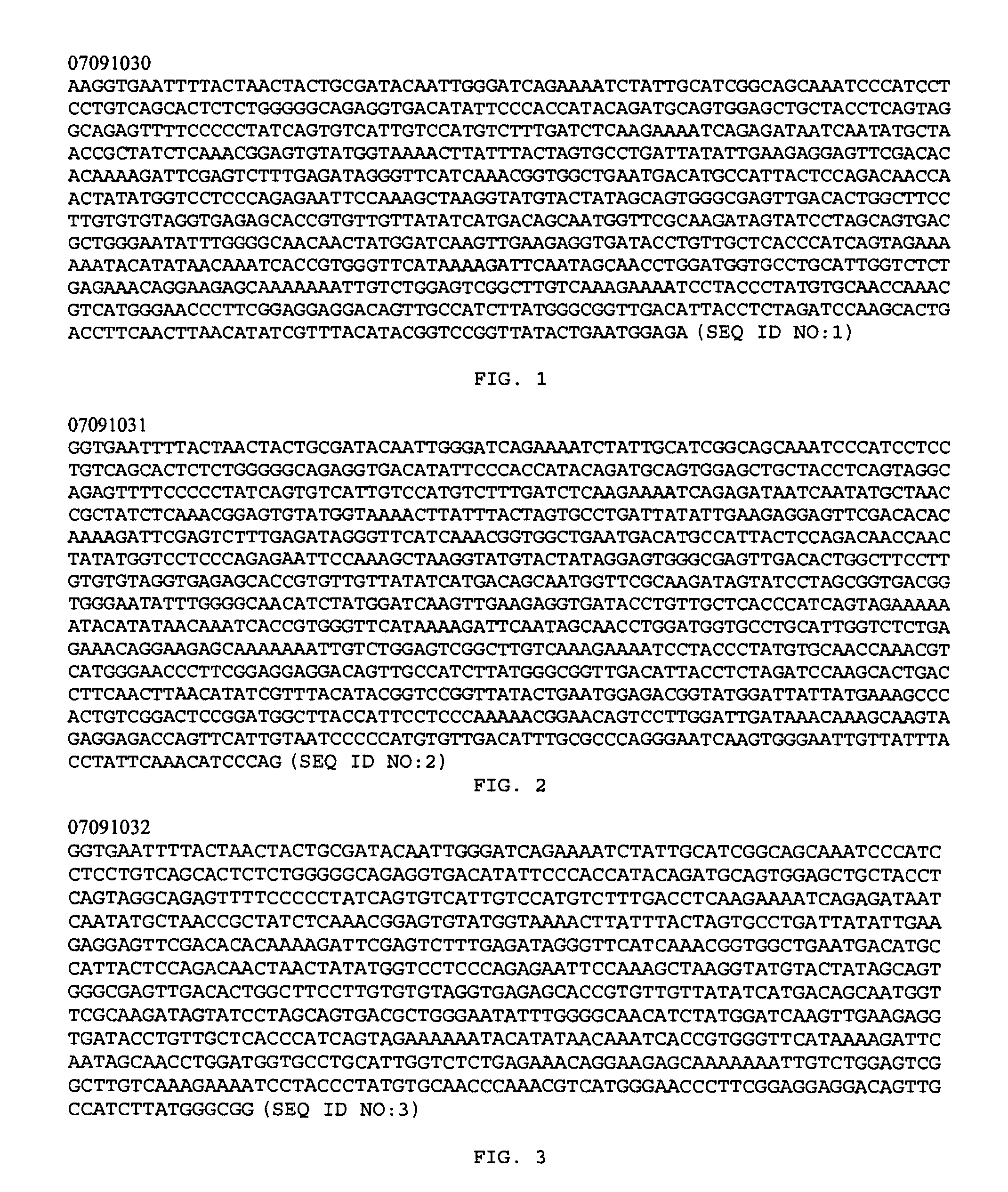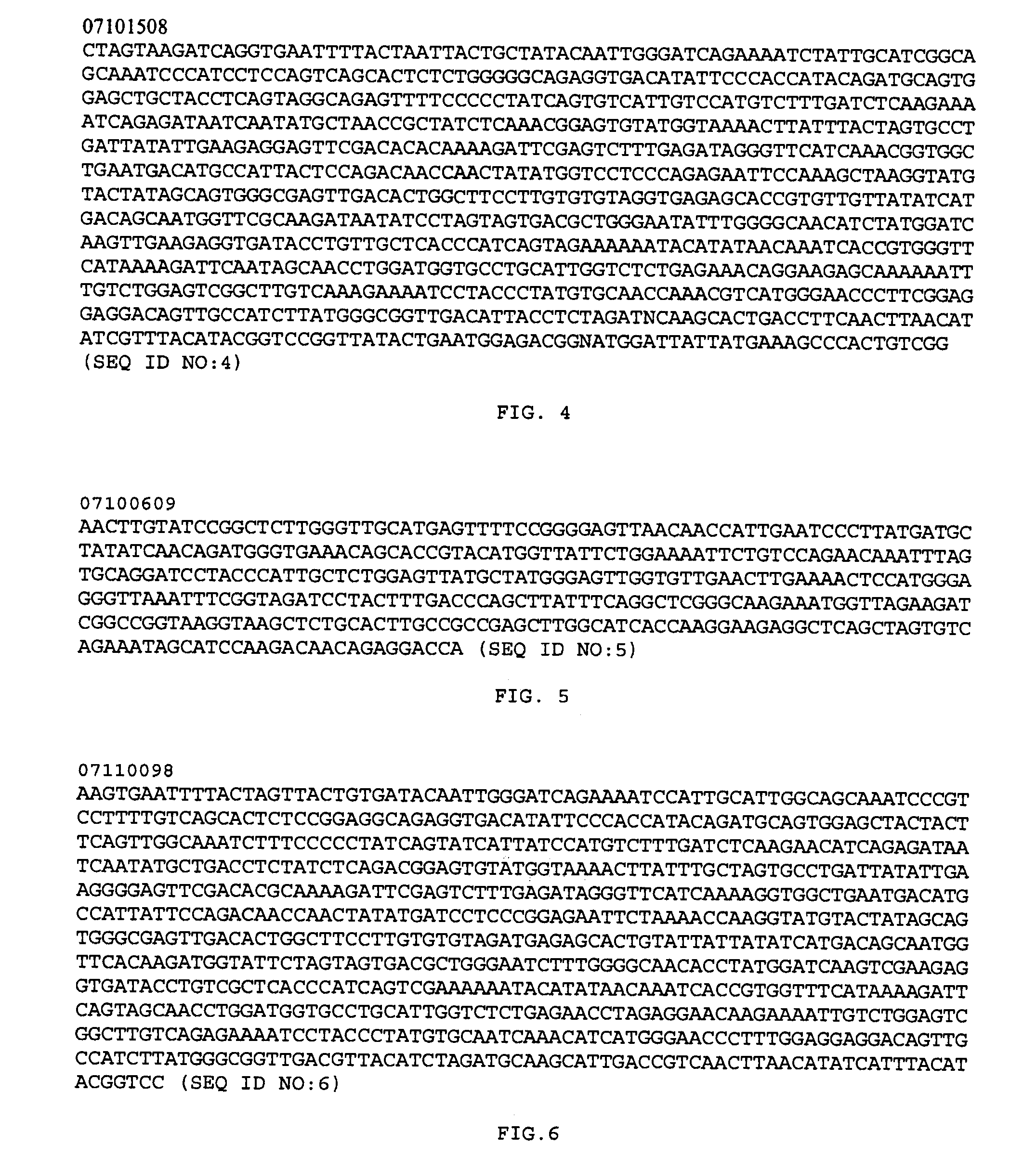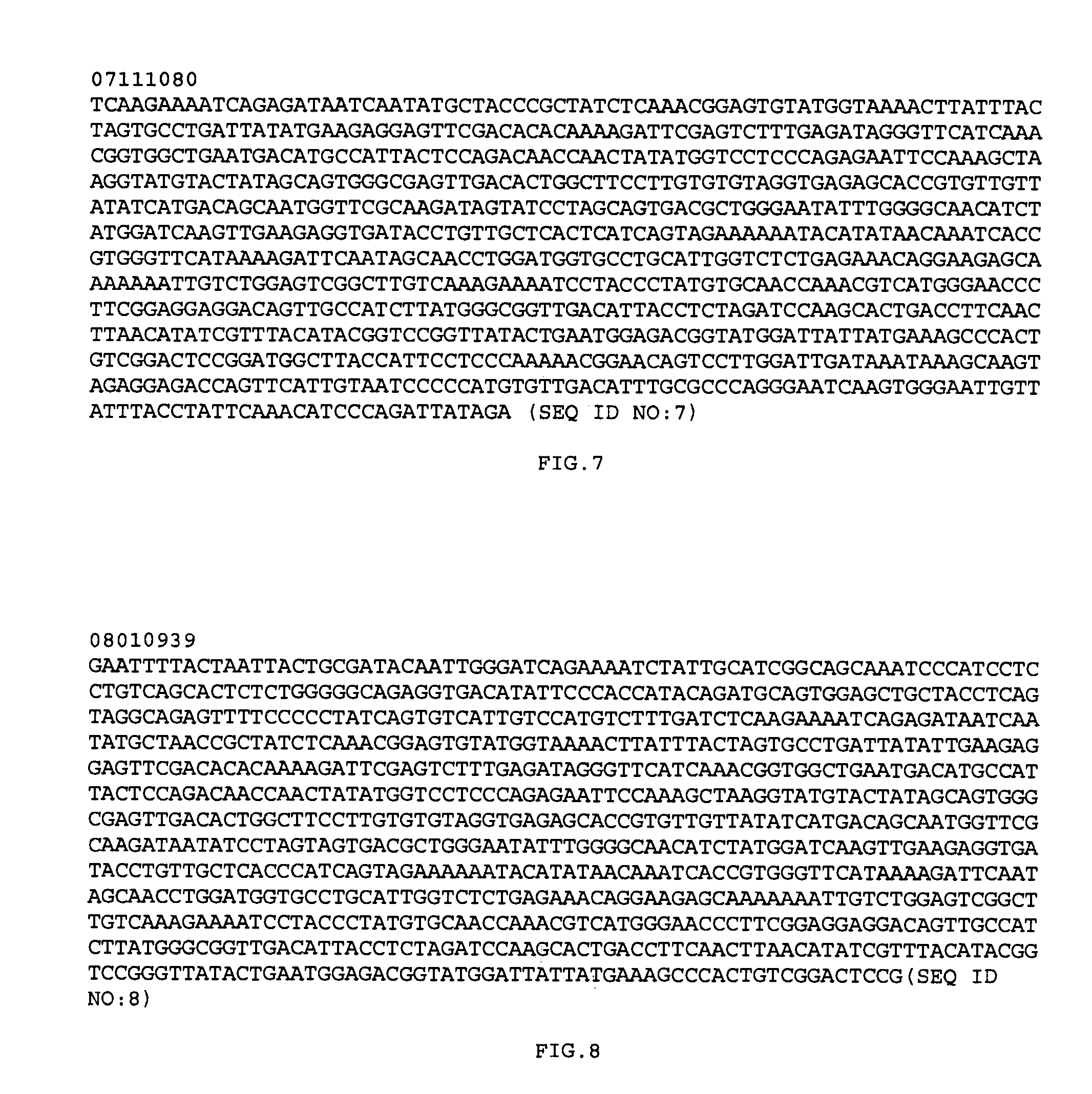Immunogenic compositions, vaccines and diagnostics based on canine distemper viruses circulating in north american dogs
a technology composition, which is applied in the field of newly identified isolates of canine distemper virus (cdv), can solve the problems of rapid death, cdv appears to be resurgence, and does not provide vaccine recipients with protection
- Summary
- Abstract
- Description
- Claims
- Application Information
AI Technical Summary
Benefits of technology
Problems solved by technology
Method used
Image
Examples
example 1
Preliminary Studies of Seven CDV Isolates
[0104]Canine distemper virus (CDV) is a highly contagious virus that causes multi-systemic disease in dogs. Seven cases of CDV in dogs from the USA were received. These CDV isolates formed large, multi-nucleated, syncytia in a Vero cell line expressing canine signaling lymphocyte-activation molecule (SLAM) (described below). Based on the hemagglutinin gene sequences, the CDV isolates from 3 states (CA, MO, and OK) formed two CDV genetic groups: Group I (major, 6 / 7) consisted of CDV isolates closely related to the European wildlife lineage of CDV. The group II (minor, 1 / 7) was genetically related to the Arctic-like lineage of CDV. However, both the CDV groups were genetically different from the current vaccine strains that belong to American-I lineage of the old (1930-1950) CDV isolates.
[0105]In this study, an evolutionary and genetic analysis of 7 CDV isolates from the United States was performed using the H gene sequences. The biological eff...
example 2
Additional CDV Isolates
[0125]Using the methods described in Example 1, additional CDV isolates were identified and are listed in Table 2.
TABLE 2OADDL Canine Distemper Virus (CDV) IsolatesOADDL No. / State ofClinicalVaccinationAgeCDVDesignationOrigin1Sign2CPE3Status4(weeks)BreedLineage58010939OKR, Nnana20MiniatureEWSchnauzer08011277-AOKR+na12Small breedEW08011277-BOKR+na12Small breedEW08011277-COKR+na12Small breedEW8011671GARnaV10MixEW8021509FLR, N+V12MixAM-28030674CAR, NnaV8GoldenEWRetriever Mix8030776OKR, N+V16MixEW8030777FLN+V12MixAM-28031346CAnanaV12PitbullEW8040383MOR+ / −na6WeimaranerAR8050180AOKRnana14Pitbull MixAM-28060351MOR, NnaV9Shih TzuAM-28060352MORnaV8Welsh TerrierAM-28080696FLR+V24MixEW8080941OKN+na12Rat TerrierEW8081112MON+ / −V11Irish TerrierAM-28120827OKN+na0.3DachshundEW8120857OKN+na5YorkshireEWTerrier9011024naN+V156Akita MixEW09020504-3KSna+nananaAM-2(08-75891)09020504-2KSnananananaAM-2(56928)09020504KSna+nanaLeopardAM-2(58829B)9041303naR+ / −V24Cattle DogEWMix09041474ATN...
example 3
Continuing Investigations of Emerging CDV Isolates: Differences in Cytopathology (CPE) Among Recent USA Canine Distemper Viruses
[0126]The results obtained in Examples 1 and 2 prompted a continued effort to isolate and characterize additional CDV isolates from the USA. Studies were carried out as described for Example 1. CDV samples were inoculated in Vero+SLAM cell line. Most CDV isolates produced large syncytia with large number of nuclei. A smaller number of CDV isolates produced smaller sized syncytia with few cell nuclei. In several CDV isolates, multiple syncytia appeared after virus sample inoculation 18-24 hours after inoculation (Fast-growing CDV isolates). In some CDV isolates, the margins of the syncytia were well defined with almost circular margins. In other CDV isolates, the margins of the syncytia were not that clearly demarcated. These “fuzzy” CPE CDV isolates tended to spread rapidly with daughter syncytia next to the mother syncytium. In other CDV isolates, daughter...
PUM
| Property | Measurement | Unit |
|---|---|---|
| ionic strength | aaaaa | aaaaa |
| ionic strength | aaaaa | aaaaa |
| core body temperature | aaaaa | aaaaa |
Abstract
Description
Claims
Application Information
 Login to View More
Login to View More - R&D
- Intellectual Property
- Life Sciences
- Materials
- Tech Scout
- Unparalleled Data Quality
- Higher Quality Content
- 60% Fewer Hallucinations
Browse by: Latest US Patents, China's latest patents, Technical Efficacy Thesaurus, Application Domain, Technology Topic, Popular Technical Reports.
© 2025 PatSnap. All rights reserved.Legal|Privacy policy|Modern Slavery Act Transparency Statement|Sitemap|About US| Contact US: help@patsnap.com



